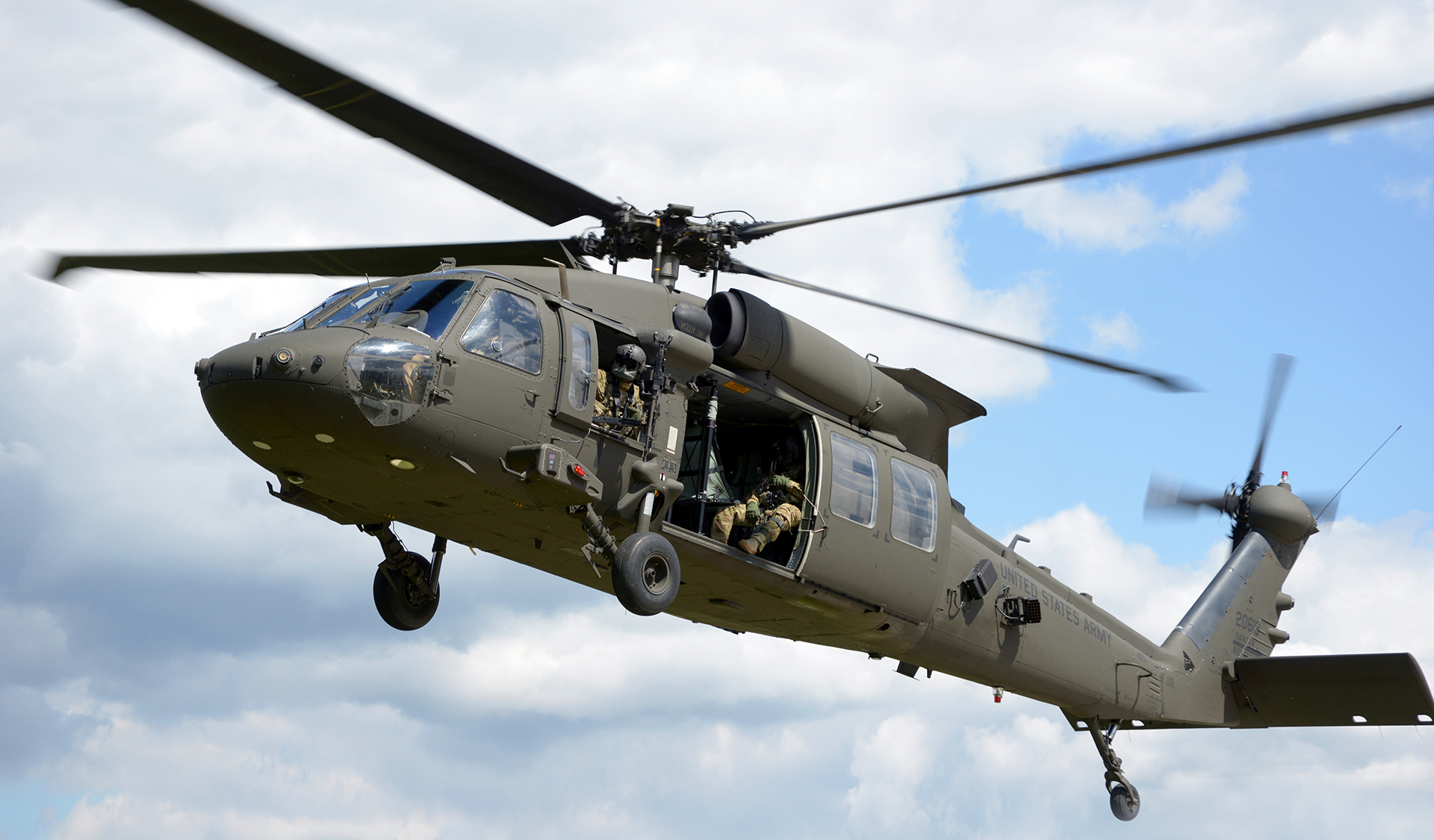The UH 60 Black Hawk: Versatility and Performance in Military Aviation
The UH 60 Black Hawk: Versatility and Performance in Military Aviation
Blog Article
Whatever You Required to Find Out About the UH 60 Helicopter
The UH-60 helicopter, a cornerstone of U.S. Army aviation since its debut in 1979, represents a remarkable blend of engineering and operational flexibility. As army demands develop, so also does the helicopter, with recurring advancements intended at boosting its capabilities and integrating modern technologies.
Background of the UH-60
Created in the late 1970s, the UH-60 Black Hawk helicopter arised as a response to the U.S. Military's requirement for a functional utility helicopter that might perform a selection of goals under challenging problems. The incentive for its layout was the drawbacks identified in the earlier helicopters utilized throughout the Vietnam War, specifically in regards to ability to move, rate, and survivability.
The Black Hawk was made by Sikorsky Aircraft, including sophisticated technologies and products to improve its performance and resilience. It was officially introduced into service in 1979, rapidly coming to be a crucial possession for military operations - uh 60. Its ability to deliver troops, medical evacuation, and logistical assistance in both combat and humanitarian missions made the Black Hawk an indispensable component of the united state Army's aviation fleet
Throughout the years, the UH-60 has actually been continually upgraded, adapting to the altering nature of warfare and the developing needs of contemporary army operations. Its operational history includes involvement in significant problems, peacekeeping objectives, and disaster relief initiatives, strengthening its credibility as a efficient and trustworthy helicopter in various environments worldwide.

Style and Requirements
The design of the UH-60 Black Hawk helicopter consistently shows a commitment to operational efficiency and flexibility. Established by Sikorsky Aircraft, this medium-lift energy helicopter features a smooth, wind resistant fuselage that boosts rate and ability to move. Its tandem rotor system, characterized by two counter-rotating blades, lessens vibration and boosts lift ability, enabling for much safer operations in varied atmospheres.
The UH-60 is powered by 2 T700-GE-701C turboshaft engines, offering a maximum rate of about 180 knots and a range of around 400 maritime miles. Its durable airframe is built from sophisticated composite materials, guaranteeing durability while preserving a reasonably reduced weight. The helicopter has a maximum gross weight of regarding 22,000 pounds, supporting a flexible payload arrangement.

Objectives and roles
A functional platform, the UH-60 Black Hawk helicopter offers a wide variety of functions and objectives within armed forces operations. Created mostly for army transportation, it can bring approximately 11 soldiers, making it a vital property for rapid deployment and logistical assistance.
Along with troop transportation, the UH-60 stands out in medical emptying (MEDEVAC) goals, furnished with advanced clinical equipment to provide essential treatment during transit. Its capacity to run in varied settings improves its effectiveness in combat search and rescue (CSAR) procedures, where quick removal of personnel is essential.
The helicopter also plays a substantial duty in reconnaissance and security goals, using onboard sensors and devices to debrief. Its adaptability prolongs to logistical support, qualified of transporting products and equipment to onward running bases.
In combat procedures, the UH-60 can be outfitted with different weapon systems, allowing it to give close air support. Its multi-role capacity makes the Black Hawk a crucial tool for modern-day army pressures, adapting seamlessly to the advancing demands of battleground scenarios and ensuring objective success across a variety of functional contexts.
Efficiency and Capabilities
Known for its durable efficiency, the UH-60 Black Hawk helicopter boasts excellent capacities that boost its functional efficiency throughout various objectives. uh 60. This multi-role airplane is outfitted with effective twin-engine Turbomeca Arriel 1D1 engines, supplying outstanding speed and maneuverability, with a maximum cruise speed of approximately 150 knots and an operational variety of important source around 400 nautical miles
The Black Hawk's innovative avionics and fly-by-wire control systems dramatically boost flight safety and security and handling, permitting it to operate in diverse settings, consisting of damaging weather condition conditions. Its versatility is further exhibited by its capacity to lug up to 11 totally outfitted troops or a payload of around 8,000 pounds, making it suitable for army transport, clinical evacuation, and logistical assistance objectives.
Additionally, the UH-60 is designed for survivability, featuring enhanced airframes, ballistic protection for crew and guests, and advanced countermeasure systems to escape dangers. The helicopter's dexterity and rate, integrated with its capacity for fast implementation, make it a vital asset in modern-day military procedures, making sure that it continues to be a crucial element of tactical air assistance and battleground flexibility.
Future Dope

One significant focus is the combination of advanced avionics systems, which will enhance situational understanding via boosted navigating and communication capabilities. This consists of the possible usage of expert system to directory aid pilots in decision-making and mission planning.
In addition, future versions might integrate innovative products and layout functions to reinforce the helicopter's durability and decrease its radar signature, enhancing survivability in disputed environments.
The introduction of hybrid-electric propulsion systems is likewise imminent, aiming to improve fuel efficiency and reduce logistical burdens. Such advancements can expand operational variety and decrease the helicopter's environmental footprint.

Conclusion
The UH-60 helicopter represents a considerable improvement in military aeronautics since its intro in 1979. The UH-60's sustaining visibility underscores its vital function in contemporary army operations and highlights the continuous development of click military aviation innovation.
The UH-60 helicopter, a keystone of U.S. Army aeronautics considering that its debut in 1979, stands for an amazing blend of engineering and functional convenience. As army requirements advance, so as well does the helicopter, with recurring innovations intended at improving its capacities and incorporating modern innovations.The design of the UH-60 Black Hawk helicopter constantly reflects a commitment to operational performance and flexibility. Created by Sikorsky Aircraft, this medium-lift utility helicopter includes a sleek, aerodynamic body that enhances rate and ability to move.The UH-60 helicopter represents a considerable improvement in armed forces aeronautics given that its intro in 1979.
Report this page